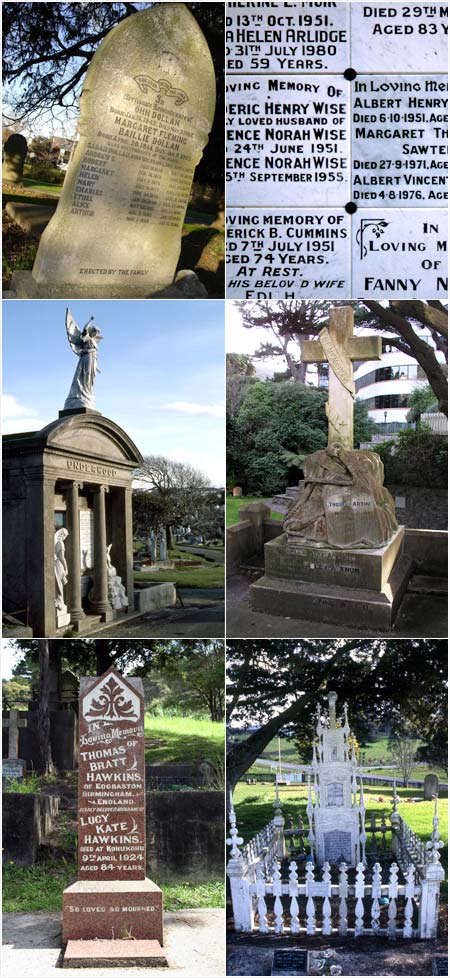
This range of headstones illustrates changing fashions in marking graves. In the early days of settlement it was not always possible to use permanent materials such as stone, and graves were marked by wooden crosses or tablets carved to look like stone. Some of these have survived. Early stone monuments could be elaborate, taking the form of broken pillars, plinths with angels, or having other appropriate decorations. Often the names of all the members of a family would be added to a single monument as they died and were buried in the family plot. Some headstones bear testament to epidemics that killed a number of young children in one family. Wealthy families flaunted their status with a vault – a decorated stone structure inside which coffins were sealed. As cremation became more common, a simple plaque on a memorial wall became a more common way of remembering the dead.
Images courtesy of Sarndra Lees, Jock Phillips, Melanie Lovell-Smith and Kerryn Pollock
Using this item
Te Ara - The Encyclopedia of New Zealand

This item is licensed under a Creative Commons Attribution-NonCommercial 3.0 New Zealand Licence






Add new comment